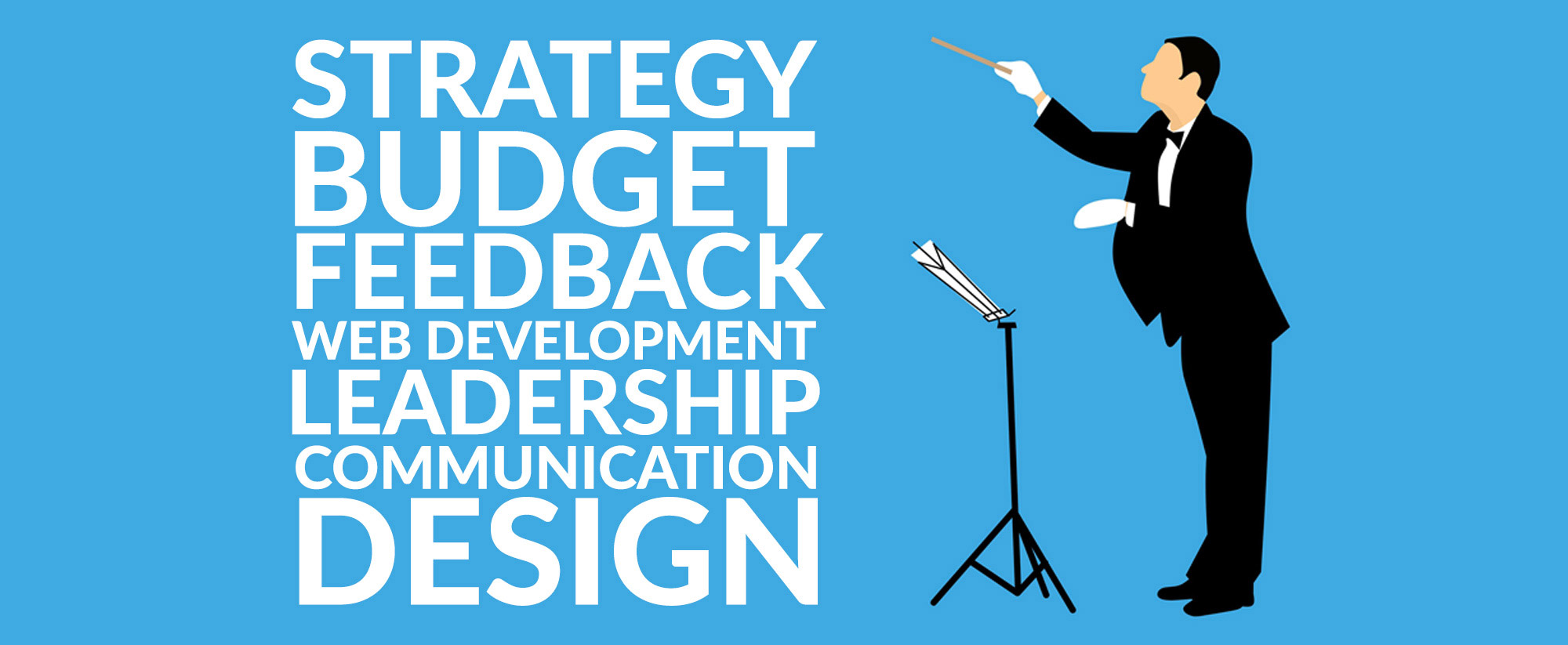During the course of a project, you may interact regularly with only two or three people at your advertising agency. (That’s by design – things can get really, really confusing otherwise.) But there’s an entire team working behind the scenes. Some, you might have met in a meeting or a concept presentation. Others you’ve never seen at all. This series will provide a rundown of all the different team members working together to make your project a success. There will not be a quiz at the end.
Remember when you walked into your ad agency’s conference room (ah, the days when we could walk into conference rooms), and a member of the project team showed you a beautiful, compelling campaign, walking you through the various elements, explaining some of the ideas? That was most likely the creative director (CD). They’re frequently the ones who do client presentations because they’ve been working on the campaign every step of the way. Every. Single. Step.
Directing the Creative
That’s really what the creative director does – lead the creative team as they develop the look and feel of your campaign. The CD helps the team as they develop a concept that will suit your brand and your goals. And then the CD guides the entire process, making sure all the visuals, messaging and other elements fit the concept and support the goals.
For some campaigns, this can be a colossal effort. If a campaign has print ads, TV commercials, outdoor boards, social media and a landing page, the CD is responsible for keeping an eye on it all to make sure it stays within the bounds of the campaign concept. Their job isn’t to micromanage or do the work themselves (although it does happen from time to time) – it’s to support the creatives so they can do the job they need to do.
Protecting the Strategy
The look and feel of the creative aren’t the only things that need to be cohesive for an effective campaign – it needs to follow the strategy laid out at the beginning of the project. The project team knows the goal of the project, the tactics to reach that goal and the necessities to execute those tactics. The strategy forms, in essence, a scaffolding that the creative will be built around. The creative director is responsible for making sure the creative team fits that scaffolding while producing innovative, eye-catching, effective work.
Helping with the Budget
It might surprise you to learn that the person responsible for the artistic elements of the campaign (and for wrangling the artists) is also involved in the budgeting process. But it’s important for them to be a part of the discussion. The CD is the person who knows how many creatives, and in which departments, are going to be involved in the development of the campaign, how much room they have to take on this work and what type of media will be used in the execution of the campaign. That information is crucial for developing a budget and timeline. And then, once the budget is set, the CD has to make sure the creative team sticks to the timeline and doesn’t sneak in any expenses that might give the client a surprise at the end.
What Makes a Good Creative Director?
A creative director generally has at least a basic grasp of the visual and written sides of advertising work. A CD will usually have worked their way up the ranks as some kind of creative – frequently an art director or copywriter – but as CD, they’ll have to understand both sides enough to guide the creative process. And they’ll have to understand the industry itself – throughout their career, they generally amass enough knowledge and experience to support their creatives when needed.
They also have to be a good manager, because guiding the concept means guiding the creatives who are working on it. That means being open-minded, a good listener and a leader with humility. No matter how tempting it might be to micromanage, hands-off is the way to go.
What This Means for You
The CD ensures that you get the kind of campaign the agency promised at the beginning of the project. They take strategy requirements, budget limitations, deadlines and many different creatives all working on different elements of your project at once, and they coax it all into that beautiful campaign you saw that day in the conference room. Those deliverables are the result of a lot of effort by a lot of people, and that it’s all come together in a cohesive, coherent campaign, is thanks to the creative director.




